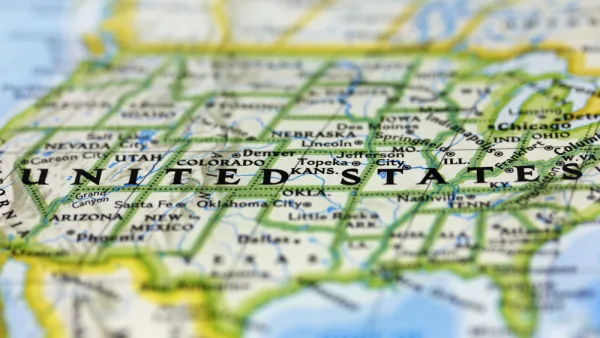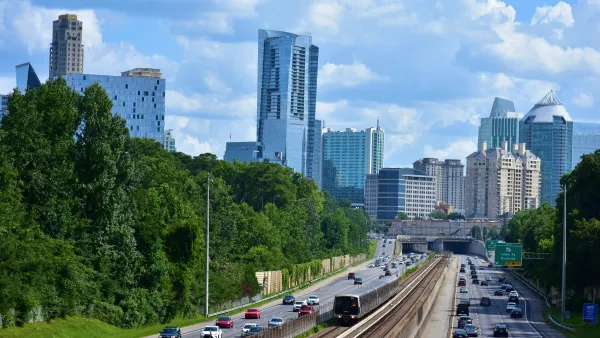Brookings illuminates which states rely heaviest on infrastructure for employment as local policymakers are struggling with reliable federal funding throughout the peak of construction season.
According to a recent post by Joseph Kane and Robert Puentes for Brookings Institute, "policymakers at the state level, in particular, are grappling with a series of infrastructure challenges given the looming shortfall in the Highway Trust Fund." To pay for needed improvements, some in the final stages of construction, states have started raising their gas taxes, turning to private funding, or supporting transportation ballot measures.
Indeed as, "more than 14.2 million infrastructure jobs are at stake in these policy discussions—the majority of which last for years beyond construction—it’s easy to see why states are acting with a sense of urgency." Taking a closer look at some of the states, California and Texas combined have about 2.7 million infrastructure jobs, based on massive trade and logistics facilities.
Moreover, when assessing the share of infrastructure jobs from total employment, "several states exceed the national average (11.0 percent), led by Alaska (15.1 percent), Wyoming (14.8 percent), North Dakota (14.4 percent), Tennessee (13.3 percent), and Louisiana (13.2 percent)."
While it is unclear in what capacity federal policymakers will be able to support infrastructure in the future, states are beginning to tackle these issues locally. These efforts, according to Kane and Puentes, are, "investing in our most fundamental physical assets, [and] they’re keeping millions of workers on the job."
FULL STORY: Ranking the Top States for Infrastructure Jobs

National Parks Layoffs Will Cause Communities to Lose Billions
Thousands of essential park workers were laid off this week, just before the busy spring break season.

Retro-silient?: America’s First “Eco-burb,” The Woodlands Turns 50
A master-planned community north of Houston offers lessons on green infrastructure and resilient design, but falls short of its founder’s lofty affordability and walkability goals.

Delivering for America Plan Will Downgrade Mail Service in at Least 49.5 Percent of Zip Codes
Republican and Democrat lawmakers criticize the plan for its disproportionate negative impact on rural communities.

Test News Post 1
This is a summary

Test News Headline 46
Test for the image on the front page.

Balancing Bombs and Butterflies: How the National Guard Protects a Rare Species
The National Guard at Fort Indiantown Gap uses GIS technology and land management strategies to balance military training with conservation efforts, ensuring the survival of the rare eastern regal fritillary butterfly.
Urban Design for Planners 1: Software Tools
This six-course series explores essential urban design concepts using open source software and equips planners with the tools they need to participate fully in the urban design process.
Planning for Universal Design
Learn the tools for implementing Universal Design in planning regulations.
EMC Planning Group, Inc.
Planetizen
Planetizen
Mpact (formerly Rail~Volution)
Great Falls Development Authority, Inc.
HUDs Office of Policy Development and Research
NYU Wagner Graduate School of Public Service





























